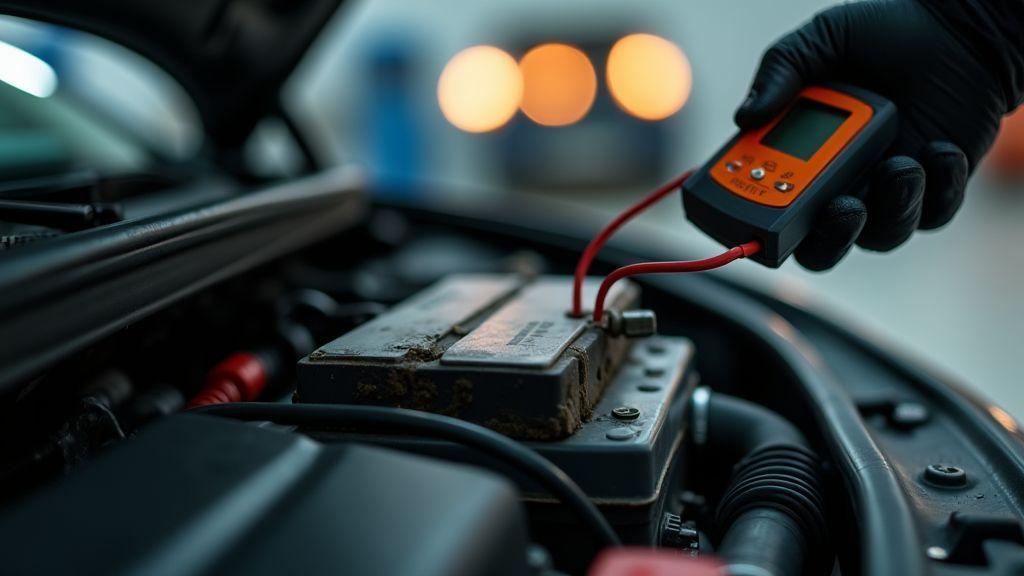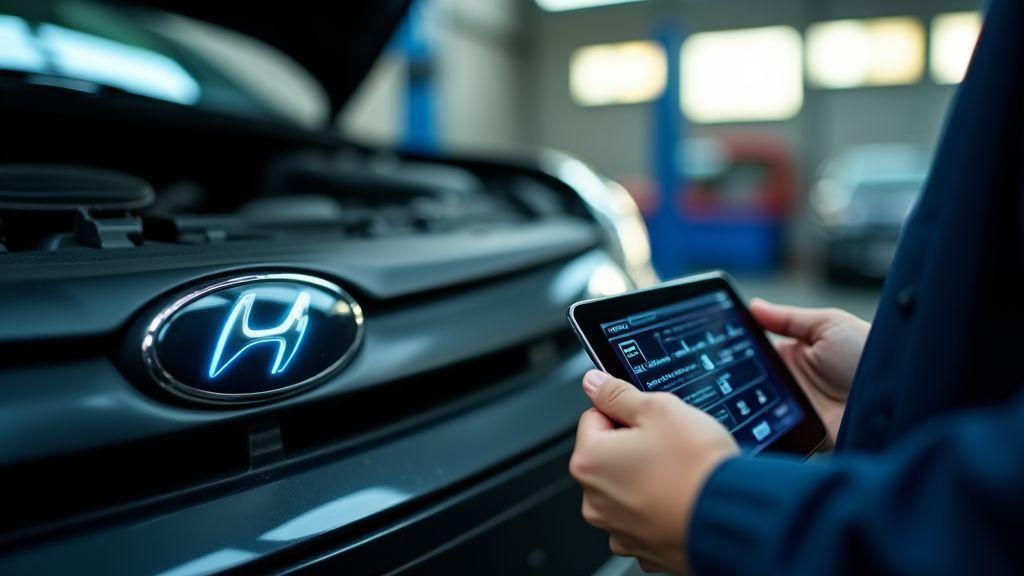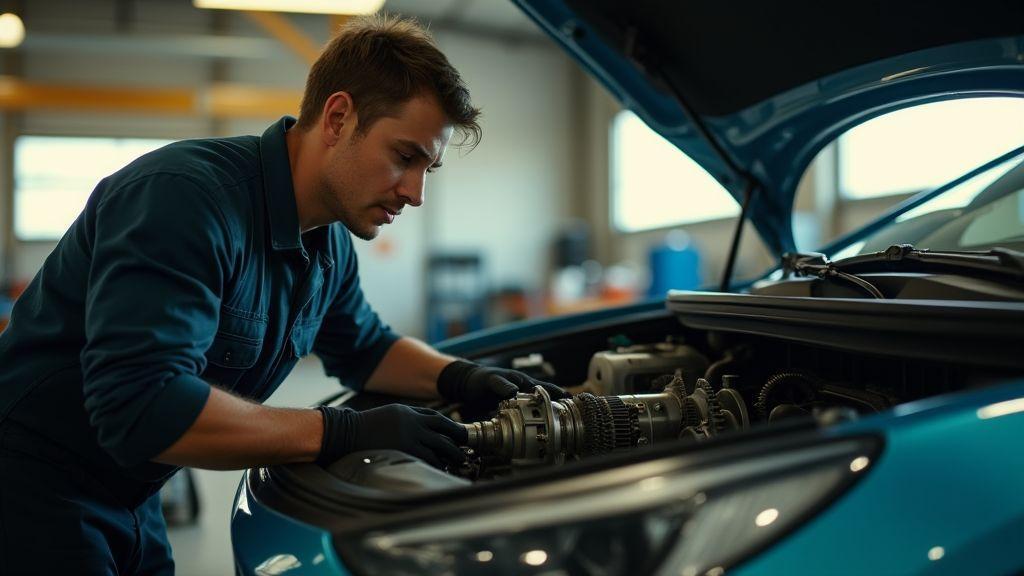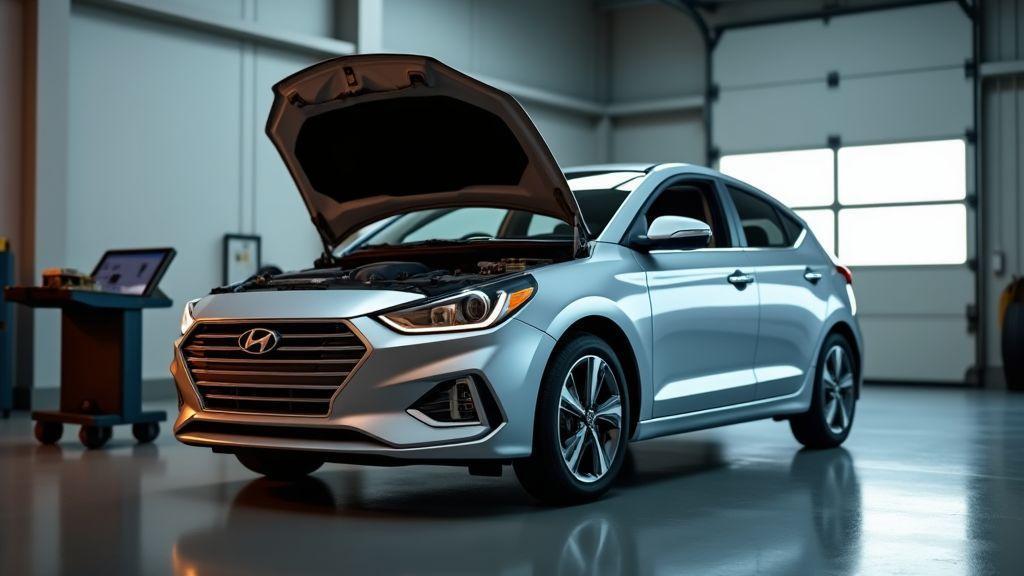Common Problems with Hybrid Cars and How to Avoid Them
You need clear signs and simple checks to keep your hybrid reliable. Learn to spot early battery trouble and stop fast degradation. Watch for weak regenerative braking, strange transmission shifts, and inverter faults. Keep cooling systems healthy to protect the battery pack. Learn smart daily habits, quick diagnostics with an OBD‑II scan, and when to call a professional. These steps help keep your hybrid safe and efficient.
Key Takeaway
- Follow scheduled maintenance to catch hybrid-specific issues early.
- Protect the battery by avoiding full drains and extreme heat or cold.
- Let trained technicians handle high-voltage parts and complex repairs.
- Install software updates and recalls to keep systems working properly — and review the vehicle terms of use for service and warranty details.
- Drive smoothly and keep tires and brakes checked to improve efficiency.

Hybrid battery problems: common causes and warning signs
Hybrid batteries wear out for a few plain reasons: age, heat, and driving habits. If you treat the pack like a smartphone that never gets a break — full charge, full drain, repeat — its cells will lose capacity faster. You’ll notice reduced electric-only range and more frequent engine starts; those are the first red flags. Common Problems with Hybrid Cars and How to Avoid Them becomes straightforward if you pay attention to signs early. For a basic overview, read how hybrid batteries age and care.
Temperature is a big player. High heat speeds chemical breakdown inside the cells, and repeated fast charging or long, hot idling spells trouble. You may see the battery cooling fan run constantly, or get dashboard alerts like battery charge reduced. Physical issues—loose connections, corrosion, or a failed sensor—can mimic battery failure. If one module fails, the system often limits performance rather than shutting down; that’s your chance to act before the repair bill jumps.
| Cause | Typical warning sign | Immediate action |
|---|---|---|
| Age / cell wear | Shorter EV-only range, more engine use | Schedule a diagnostic battery test |
| Heat / heavy use | Cooling fan runs often, dashboard warnings | Park in shade, avoid long high-temp idling |
| Electrical faults | Error codes, sudden trip computer drops | Check connectors and have a shop scan codes |
How to avoid hybrid battery failure
You can delay a costly failure by adjusting daily habits and service routines. Avoid leaving the car parked in direct sun for long stretches and limit rapid charge-discharge cycles when possible. Short trips where the battery never reaches a healthy operating temperature stress the cells; aim for at least one longer drive each week to balance the pack.
Service is your safety net. Have the hybrid system checked at regular intervals, and if a warning light appears, don’t shrug it off. A quick diagnostic scan often spots a failing module or sensor before a full pack replacement is needed. Think of preventive checks like routine oil changes — small steps that prevent big headaches.
Simple habits for extending hybrid battery life
- Park in shade or a garage
- Take a longer drive weekly to heat and balance the pack
- Avoid constant rapid acceleration and heavy loads
- Address dashboard warnings immediately
- Check the cooling system and follow factory service intervals
Regenerative braking problems: why regen can lose power
Regenerative braking can lose power for simple mechanical and electronic reasons. If the traction battery is too full, the system can’t push more energy into it, so the car shifts braking duty to the friction brakes. Cold batteries accept charge poorly, and extreme heat can also reduce regen to protect cells. Electronic and sensor faults (wheel speed sensors, brake light switch, wiring, or software) can tell the controller to back off regen as well. For a technical summary, see how regenerative braking systems recover energy.
Signs you have regenerative braking problems
You may notice a change in how the car slows: less deceleration when coasting, firmer or spongy pedal feel, or a dash message like Hybrid System Check. You might hear the motor-generator sound different or see a drop in battery charge while driving. ABS or traction control lights may accompany the issue.
| Sign | Likely cause | What you can do |
|---|---|---|
| Little or no decel when coasting | Full or cold battery | Drive to use charge, or let battery warm up |
| Dash hybrid or regen warning | Sensor or controller fault | Scan codes, check wiring; visit hybrid tech |
| Sudden switch to friction braking | Safety limit or software fallback | Note conditions (temp, SoC); test after warm-up |
How you can reduce brake system wear
Let regen do the heavy lifting: smooth, anticipatory driving keeps pads and rotors cleaner. Maintain brake fluid and replace worn pads before they damage rotors. Get software updates when available to refine regen calibration.
Daily checks to keep regenerative braking working
- Check dash for hybrid or brake warnings before driving
- Lift off at low speed and feel if the car slows smoothly
- Watch battery state-of-charge when you coast; a stable rise means regen is working
- Inspect around wheels for leaks or heavy brake dust
- Keep tire pressure correct; uneven tires change wheel sensor readings

Diagnosing hybrid warning lights: where to start
When a warning light pops on, stay calm. Pull over when it’s safe. Note any loss of power, strange sounds, or smells—these details tell the mechanic more than the light alone. Check your owner’s manual and take a photo of the dash. If the light is red or the car goes limp, treat it like an emergency. If it’s amber and the car still drives fine, gather facts before heading to a shop.
You can do a few low-risk checks: restart the car to see if the light resets, look under the hood for loose caps or low coolant if a coolant light is on, and photograph the dash. Don’t poke at high-voltage components; if the warning persists, call roadside help or contact our service team for guidance. If you upload diagnostic images or logs to an external service, review the site’s privacy policy first.
Common hybrid warning lights and what they mean
Hybrids show a mix of familiar and new warnings: check engine, ABS, traction control, plus hybrid system or battery pack lights, ready/EV indicators, and HV (high-voltage) warnings. Colors matter: red usually means stop or get help now; amber means check soon.
| Light | Likely cause | Action / Severity |
|---|---|---|
| Hybrid system / HV warning | Inverter, BMS, or high-voltage fault | High — stop if performance drops; tow to dealer |
| Battery pack / charge warning | Cell imbalance or BMS error | High–medium — limit driving; scan for codes |
| Check Engine (CEL) | Emissions, sensors, or engine faults | Medium — drive gently; scan soon |
| Brake / ABS light | Brake system or regen issue | High — reduced braking safety; stop if abnormal |
| Coolant / Overheat | Inverter or engine cooling fault | High — stop to prevent damage |
| Traction control / EV mode lights | Software or sensor issue | Low–medium — can usually drive with caution |
How to use an OBD‑II scan to help diagnose hybrid warning lights
An OBD‑II scan tool is a translator for the car’s brain. Plug it into the port, turn the ignition on, and read codes. Hybrids store regular engine codes and hybrid-specific codes (P0xxx, P1xxx, Bxxxx, Uxxxx). Not all cheap dongles read hybrid battery or inverter data—use a scanner that lists hybrid support for pack state, cell voltages, or HV system faults. Write down codes and freeze-frame data; don’t clear codes before you fix the problem.
Simple steps when a hybrid light comes on
- Pull over safely if performance drops or a red light shows
- Note symptoms: noises, smells, loss of speed, or warning patterns
- Take photos of the dash and any codes shown
- Try a restart; if the light stays, don’t drive far
- Call roadside assistance or your dealer for guidance
Inverter failure signs hybrid owners should watch for
The inverter bridges your battery and electric motor. Early signs of inverter trouble include warning lights, sudden drops in power, odd engine behavior, unusual electrical smells, loud inverter or cooling fan noise, or lurches when electric drive cuts in or out. Problems can be intermittent—limp mode for a short trip then fine the next day.
- Warning lights or hybrid system messages on the dash
- Loss of power or sudden shifts to gas-only driving
- Jerking, hesitation, or unexpected limp mode
- Strange smells, overheating, or loud inverter/cooling fan noise
- Rapid swings in battery state-of-charge
How inverter failure signs appear in performance
Acceleration may feel weak, delayed, or uneven. Regenerative braking can become inconsistent. The engine may run more often and fuel use can rise. These shifts point to inverter or cooling/control system problems.
| Symptom | What you feel or see | Quick meaning |
|---|---|---|
| Dash hybrid/system warning | Light or message appears | Electronics detected a fault |
| Power loss or limp mode | Sluggish acceleration | Inverter limiting output |
| Erratic regenerative braking | Brakes feel different | Inverter or control errors |
When you should have electrical systems inspected by a pro
Get a professional check if any hybrid warning light appears, after repeated power drops, a burning electrical smell, or repeated limp mode. Have inspections after water exposure or collision. Older hybrids (over six years or high miles) should get an electrical check yearly. Pick a shop with hybrid experience and bring symptom history.
Safe checks you can do to monitor inverter health
Watch the dash for messages, note odd smells, listen for loud inverter or cooling fan noise, and look under the car for coolant or other leaks. Log when problems occur and never open high-voltage covers or touch orange-cabled components.

Hybrid transmission issues: shifts, noises, and slipping
Hybrid transmissions blend an electric motor, gasoline engine, and a gearbox or eCVT. When software, clutches, or fluid don’t work together, shifting can feel strange: lag, jerks, hesitation, whining, or metallic grinding. Slipping—engine revs without forward motion—can come from worn friction elements, failing torque converters, or software confused by low battery state.
Symptoms that point to hybrid transmission issues
- Delayed acceleration or jerky shifts
- Unusual noises that change with speed or mode (whining, clunking, grinding)
- Slipping or shuddering during takeoff
- Dashboard warnings paired with drivetrain sounds
Routine maintenance tips to protect the drivetrain
Follow the owner’s manual for transmission fluid and software updates. Use hybrid-specific fluids and technicians who know hybrid systems. Avoid hard launches, heavy towing, and allow gentle warm-up on cold days.
Maintenance steps to avoid transmission damage
- Check transmission and inverter fluid at recommended intervals
- Update vehicle software when the manufacturer releases patches — check vehicle recalls and update history
- Use a certified hybrid shop for clutch, motor, or electronic repairs
- Drive gently for the first few minutes after a cold start
- Keep records of symptoms and services for warranty and resale value
| Symptom | Likely cause | Immediate action |
|---|---|---|
| Whining at speed | eCVT or reduction gear wear | Note speed/load, get inspected soon |
| Grinding or clunking | Worn clutches or low fluid | Stop driving if loud, tow to shop |
| Hesitation/jerk on takeoff | Slipping clutch, software mismatch | Log when it happens, book diagnosis |
| Dashboard transmission/battery warning | Sensor or control unit fault | Scan codes; don’t ignore lights |
Hybrid cooling system problems and keeping components cool
The cooling system keeps the battery pack, inverter, and motor from overheating. When coolant leaks, the pump fails, or airflow is blocked, heat builds fast—shortening battery life, stressing electronics, and triggering limp modes. Cooling problems often start small: cracked hose, worn fan, or dirty radiator. For more on thermal design and implications, read about battery thermal management and cooling systems.
| Symptom | Likely cause | Immediate action |
|---|---|---|
| Overheat warning light | Low coolant / pump failure | Stop, let cool, check level, call service |
| Strange fan noise | Worn fan motor or debris | Inspect fan area; avoid driving at high load |
| Reduced battery range | High pack temps / thermal limits | Reduce load; cool down before heavy use |
How cooling problems speed up battery wear
Heat increases internal resistance and reduces capacity. Cooling faults force the control system to cut charging or output to protect the pack, which costs efficiency and battery life over time.
Preventive checks to avoid cooling system problems
- Check coolant level and top with the correct fluid
- Inspect hoses and clamps for cracks or looseness
- Clear debris from the radiator and fan area
- Listen for fan and pump noises during startup and operation
- Verify coolant flush intervals and software updates
Simple practices for extending hybrid battery life
Drive with gentler inputs and avoid long high-load trips when the pack is hot. Park in shade or a garage to reduce heat soak. Keep the cooling system in good shape and follow scheduled maintenance. Shorter fast accelerations, steady highway speeds, and periodic longer drives help balance the pack.
Conclusion
This guide lays out practical steps to spot and avoid Common Problems with Hybrid Cars and How to Avoid Them: monitor battery health, watch regenerative braking, note inverter signs, keep the cooling system healthy, and maintain the drivetrain. Use an OBD‑II scan for early clues, log symptoms, and let trained technicians handle high‑voltage work. Treat dash lights seriously and favor calm driving over constant sprints.
Follow scheduled maintenance, address warnings early, and adopt simple daily habits—shade parking, gentle acceleration, and a weekly longer drive—to avoid most surprises and extend the life of expensive components. For a wider library of guides and resources, visit the Meridian Pioneer resource hub.

